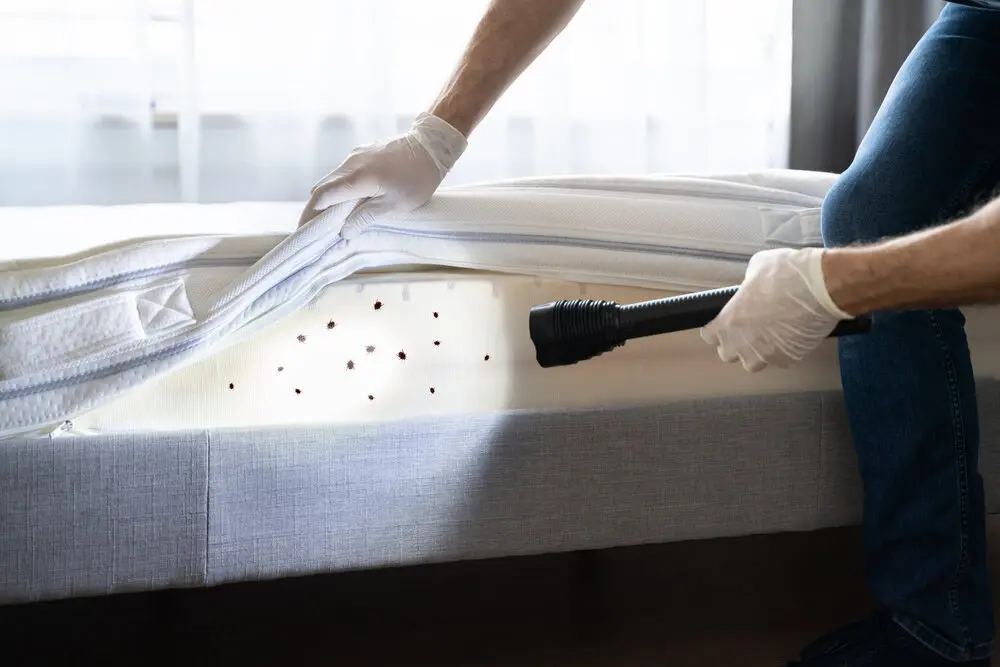Bed Bug Exterminator Buffalo LLC - Trusted Pest Control Services
Bed Bug Exterminator Buffalo LLC - Trusted Pest Control Services
Blog Article
Cutting-Edge Treatments for Bed Insect Control and Extermination
Recent advancements in the field of pest monitoring have actually presented innovative therapies that show pledge in successfully managing and exterminating bed bug problems. As we discover these modern methods, we may reveal new understandings right into combating bed insects that might reinvent the way we come close to pest control.
Warm Treatment
The application of warm treatment in bed insect control and extermination is an extremely reliable approach that targets all life stages of bed pests. Warm treatment entails elevating the plagued area to a temperature dangerous to bed bugs, normally between 117 to 122 degrees Fahrenheit, for a continual duration. This process is helpful as it can permeate splits and holes where bed insects hide, ensuring detailed eradication.
Among the key benefits of heat treatment is its capability to get rid of bed pests at all life phases, consisting of eggs, nymphs, and grownups. Conventional pesticides may not always effectively target eggs, leading to prospective re-infestations - Bed Bug Exterminator Buffalo NY. Additionally, warmth therapy is a non-chemical method, making it a preferred option for those concerned concerning making use of chemicals in their space
Furthermore, warmth treatment is fast-acting, with the capacity to get rid of bed bug problems in a single treatment, reducing the need for several check outs. This not just saves time yet also minimizes interruptions to the owners of the cured area. In general, heat treatment stands apart as a trustworthy and reliable approach for attending to bed insect infestations adequately.
Cryonite Cold
Using Cryonite freezing is a cutting-edge technique in the realm of bed pest control and extermination. This sophisticated approach entails the application of safe, quick cold modern technology to remove bed pests whatsoever life phases. The procedure includes making use of a particularly developed device that transforms liquid CO2 into snow-like particles, which are then routed onto infested locations.
One of the essential advantages of Cryonite freezing is its capacity to pass through deep into cracks, holes, and other hard-to-reach areas where bed insects generally hide. The severe cool temperature level (-110 ° F) of the Cryonite snow properly destroys bed insects by disrupting their cellular framework, triggering ice crystals to create within the parasites and bring about their rapid death.
Moreover, Cryonite cold leaves behind no chemical deposit, making it an eco-friendly alternative for insect control. This technique is perfect for sensitive atmospheres such as hospitals, schools, and food processing centers where traditional chemical treatments might not appropriate. By using Cryonite cold, insect administration professionals can supply a secure, effective, and sustainable remedy for bed pest invasions.
Insect Development Regulatory Authorities
Integrating insect growth regulators into parasite control strategies can successfully interfere with the development and recreation of bed bugs. Insect Development Regulators (IGRs) are synthetic chemicals that mimic insect hormonal agents, disrupting the molting process and avoiding the bed bugs from reaching maturation. These regulators function by preventing the bed bugs' capacity to replicate, ultimately causing a decrease in their population over time.
One of the vital advantages of making use of IGRs in bed pest control is their capacity to target bed insects in numerous life stages, including eggs, fairies, and grownups. By interfering with the bed insects' development cycle, IGRs offer a lasting remedy to infestations, reducing the need for repeated treatments. In addition, IGRs are taken into consideration low in toxicity to people and family pets, making them a safer choice for bug control in property and industrial settings.
When implementing IGRs as component of an integrated bug pest control los angeles administration strategy, it is important to adhere to the maker's directions for application and dosage to make best use of efficiency while reducing prospective dangers. Generally, incorporating insect development regulators into bed pest control methods can play an important role in achieving detailed and sustainable pest management outcomes.

Airing Out Strategies
Efficient bed insect control usually demands using specialized airing out techniques. Airing out is an effective technique that entails the introduction of poisonous gases right into a sealed space to get rid of bed bugs at all life stages. Among the primary advantages of airing out is its ability to penetrate deep into splits, holes, and various other concealing areas where bed insects might stay, ensuring detailed elimination.
Sulfuryl fluoride, generally understood by the profession name Vikane, is a commonly made use of fumigant for bed pest control (Bed Bug Exterminator Buffalo NY). This colorless gas effectively targets bed pests and their eggs, offering a high success rate in removing invasions. In addition, sulfuryl fluoride leaves no deposit after therapy, making it a hassle-free alternative for integrated insect management programs

Organic Parasite Control
Offered the complex nature of airing out methods in attending to bed pest infestations, exploring the world of biological parasite control uses a distinct method to taking care of these durable bugs. Organic bug control entails making use of living microorganisms, such as parasitical wasps, fungis, or germs, to target and control bed bug populaces.
One effective technique of biological pest control is the introduction of parasitical wasps that specifically target bed bugs. These tiny wasps lay their eggs inside bed bug eggs, preventing them from hatching and inevitably minimizing the bed pest population.
Conclusion
In verdict, the innovations in bed bug control and extermination methods have provided effective remedies for removing invasions. Heat treatment, cryonite cold, insect development regulatory authorities, airing out techniques, and biological insect control offer cutting-edge alternatives for combating bed pests. By using these cutting-edge treatments, individuals and bug control experts can effectively manage and eliminate bed bug populaces, making sure a pest-free environment.
Report this page